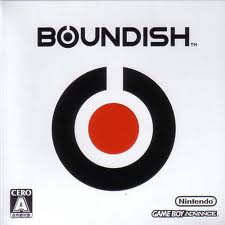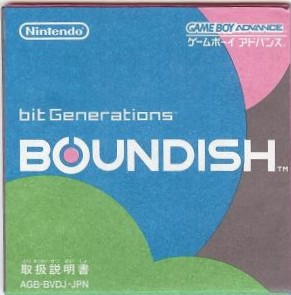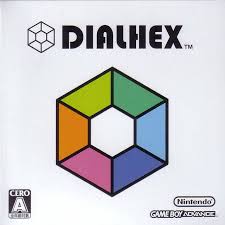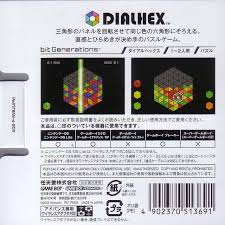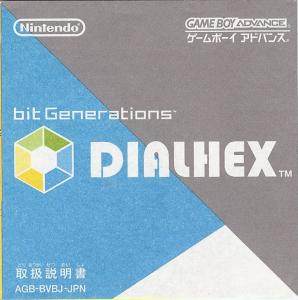
|
<<< Prior Page |
|
Series 1: |
Series 2: |
Series 2 (con't): |
|
|
There often comes a time when first-party developers must create new IPs in an effort to gain sales on their new hardware. Enter Nintendo and their close subsidiary, Skip Ltd. Given Skip’s success with well-recognizable titles such as Chibi-Robo! and the Japan exclusive Giftpia, it was simple to fathom the ability to advertise the final Game Boy model, Micro. Releasing seven titles over the course of two weeks, they (along with Q-Games) had graced Japanese gamers with the budget-priced, simple-yet-wonderful, and aesthetically-driven bit Generations series.
All of the games in Series 1 (July 13, 2006) are on the more traditional side of things, with game elements that will be familiar to most. Series 2 (July 27, 2006), instead features brand new concepts, making them slightly more difficult to categorize with genres. Every game is in English, despite not having much text to read in them, and English’s “sexy” appearance as a popular foreign language in Japan was probably one aspect of its marketing push. Since this was near the end of the Game Boy Advance’s lifespan, there is a very large foundation of physics and smooth animating throughout the franchise.
Clearly not bringing about the vibrant casts of their previous GameCube antiquities, the teams made hefty usage of commercials, online flash tutorials, and even going past the customary limit by sending copies of the games to various Club Nintendo members; asking for any opinions they may have had. The one-time series was initially planned for a North American release with a post-presentation E3 2005 trailer showcasing very early forms of BOUNDISH, DIGIDRIVE, dotstream, and COLORIS, in addition to a near complete DIALHEX, and an unreleased game called EYEBALL. The series was not further addressed until a 2006 ESRB rating file under the moniker Digiluxe, and from there it evanesced from the minds of few in the Western world, save for the relatively large amount of importers.
Note: From this moment onwards, all bit Generations games will be referred to using capitals only on the first letter (not including captions and headers). Like Soundvoyager.

EYEBALL (unreleased)
Links:
Official Site: This is really an archived version, as the present day website does not have the working flash tutorials.
"Digitylish Series" video: This the video showcasing the aforementioned games of the series.
One way or another, most people seeing static images of this game will probably mention something about Tron, maybe even Defender, but not so fast, Dotstream is a racing game with plenty of strategic elements to it.
Dotstream’s gameplay is stripped down into sidescrolling movement with controls that quite possibly couldn’t get anymore simplified. Players can move up and down using the D-Pad, B works as a brake (that hopefully will never be needed), the A button uses any power-ups you may have, and the R trigger uses your boosts.
On the topic of boosts, two are given at the start of each race, and they can be used any time after the first few seconds of acceleration. Skip opted for an F-Zeroesque approach by linking the amount of hits you can take with your boost count, so you can use both of your boosts granted you’re okay with an immediate loss once you are hit. Your boosts can be replenished at a pit stop every lap, although you will definitely sacrifice your placing and a precious ten seconds; absolutely horrifying for those who like to get a high score, or first place for that matter.
The lines themselves cannot overlap each other in two senses, the more relevant case involves lines of lower position being pushed to the side when two racers are in the same lane, very much like the polarity forces of water and oil. This will add to the difficulty of later tightly-cramped stages when the trails of lines keep you residing to only one lane. The plus side of this is that the lines ahead of you often run into obstacles, removing hazards from the track. The second no-overlapping rule is that you can never fall so far behind that lines will pass you once again, instead (as shown on the position monitor) all of the other lines freeze in place until you get close enough for them to move again.
The biggest innovation this game offers is a slip meter that slowly increases your speed while drafting along an opponent’s trail, rivals can do the same, although they always start with greater acceleration and never slipstream on purpose, so it’s essentially a player exclusive feature. This combined with proper usage of boosts in addition to the knowledge of the “drawing” layouts (as the courses are called), and adjusting positions only when necessary really adds a great sense of strategy to a seemingly simple racer.
Dotstream has a total of 30 courses across six grand prix matches named after various light phenomena (minus GP# 1, Sonic), with the sixth one being unlocked only after beating each course in first place, something that will most likely take multiple attempts. In Campaign you must play the courses in order as always, and with Spot Race you can play the courses you have already played on Campaign; individually.
There isn’t any multiplayer, possibly as a result of the line trails and constant scrolling that must be taken care of simultaneously, especially in the longer courses. But hey, at least there won’t be any frustration in dealing with family members who enjoy using a few too many red shells, right? And as always, what would a good modern-day racing game be without power-ups of its own?
Power-Ups / Event Panels
Bomb Item (Lightning)
They’re called bombs and yet look like lightning? This handy bolt will remove all temporary obstacles, or boxes, from the screen.
Invincibility Item (Star)
Allows the player to pass right through any and all obstacles for about ten seconds.
Slow Item (Skip)
Slows the player down to a crawl while freezing every opponent for less than three seconds.
Slow Panel
Makes a splooshing sound when touched; they will slow the player greatly and are occasionally used as a trap.
Every grand prix that is won with first-place overall will award you with an input command for the completely separate Formation mode. Formation is centered around using the commands that you have earned to perform synchronized tricks with multiple lines, like X-axis flips and controlling all lines at once. Its required that you collect energy packets to stay alive with each filled container granting you another line. The color schemes and sound quality develop throughout, and once all seven lines are scored, caverns that need the X-axis flipping method with be flung towards you at high speeds, making it a necessity to beat every GP for the abilities. The final product is a miniature synthesis of color and sound that is all controlled with the presses of buttons. Unfortunately, as it is a very nice break from the main game at first, it’s a somewhat underwhelming excuse for an endless high-score based mode that does grow repetitive from normal gameplay or constant mistakes.
The caverns may need a couple of dreaded retries, and they only get more complex from there.
The visuals aren’t going to win any trophies, but its presentation does have a very neat sense of depth, whether it be its vector-like graphics casting a gentle rainbow on one’s eyes, or how it appears like every line is actually a pixel-perfect hand drawing that you won’t ever lose track of despite every line being pixel thin.
Audio, as with all bit Generations games, should have its own recognition as well. Dotstream enjoys a fluid combination of the NES’ Ricoh RP2A03 8-bit sound processing and the jumping beats of IDM groove; it’s nice to transition from Lightning’s tom-tom bangs to Plazma’s mellow bagpipe trills. Some tracks change depending on the player’s position, and each of the 30 drawings has a theme of their own, ensuring that people won’t fall victim to repetition. Each GP even has its own sound effects for boosts, crashes, and slowdowns.
All in all, Dotstream is an entirely original mixture of the futuristic presentation of today’s games and the looks of the old. It hits the mark with a minimalistic approach that hasn’t been seen since even with the plethora of contemporary indie titles in this same manner. The difficulty can get high at some points, although the game is only about five hours long on your first playthrough, with replay value being the major facet. All bit Generations games were initially 2,000円 (approx. $18) but being one of the more popular titles, it goes for a little more on the aftermarket.
Quick Info:
|
Developer: |
|
|
Publisher: |
|
|
Designer: |
|
|
Genre: |
|
|
Themes: |
dotstream (GBA)
dotstream (GBA)
dotstream (GBA)
dotstream (GBA)
dotstream (GBA)
dotstream (GBA)
dotstream (GBA)
dotstream (GBA)
dotstream (GBA)
dotstream (GBA)
dotstream (GBA)
Additional Screenshots
Boundish, as most reviewers in the past have stated, is just Pong. That’s it, they made it sound like it was horrific, but that’s not important. What is, is that while this might not be the game in which one will sit down, and play it for hours upon hours, Boundish manages to expand the original formula of Magnavox’s Tennis and proves to be a fun diversion in short five-minute play sessions.
Starting with the title screen, the player will be greeted to a quick animation right before being able to jump right into the action. Whether it be toying with the main menu’s sound effects, playing one of the five “courts” available, or even waiting for the credits to appear after idle input; there aren’t too many things to do and this is where it becomes apparent that Boundish really is meant for quick bursts of fun.
Pool Flower
The first court, “Pool Flower”, is much like the Light Tennis most are used to. It starts out how you would expect it to - hit the ball back and forth - that is until lightly shaded blobs slowly drift into the play area. These blobs upon being hit will change to the color respective of the one who hit it. The purpose? They add a bit of strategy in that wafting through a blob of your opponent’s color will cause you to become sluggish, possibly costing a point in addition to changing the ball’s velocity or even causing ricochets against them. This can be used at a great advantage when you are able to send the ball whirling past the end line without the CPU being able to reach it in time. The controls are fluid when moving around; with dynamics from hitting the ball making quite a splash. The music isn’t anything special with a second-long loop that doesn’t distract and gets the job done.
Box Juggling
“Box Juggling” is a diversion from a game that can already be treated as a diversion itself, not that it’s a bad thing, with a concept that won’t shock and isn’t truly Pong at all. You control a blocky stick figure that duck-walks along the bottom of the screen. An orange box is dropped towards you and you’ve got to keep it from reaching the floor; simple. You realize the box can be thrust into the air with A, not only sending it soaring, but adding a multitude of points to the slowly moving score counter in the blank backdrop. It feels like it’s starting to get boring when pink boxes start raining down from the sky; before you know it you have another box, and later, a heavier red box, and it’s not long before you get tiny boxes. The struggle to keep every box airborne will get to the point that one will not even have the ability to commit large thrusts, and there you have it, "Box Juggling", the only high-score based court in Boundish.
Wait a second, there’s more; that’s right, power-ups. Three are available: the “helmet” provides you with protection from any boxes that may fall on your noggin (which normally stuns you), the “helper” is a copycat who follows your trail and saves missed boxes, and the “warp gate” allows you to walk off screen and return from opposite side once. Similar to “Pool Flower”, the controls aren’t a stickler and the calming xylophone tune really branches out for a decent game time.
Power Slider
“Power Slider” is a relatively expansive court in Boundish from the abundance of physical properties featured in it. On the lemniscate-shaped court, either player can release a charged shot with A or hit the curling stone-like puck from the side causing it to spin. When the spinning puck lands, it bounces in a different direction making a dent in the rink along with a 8-bit squeal. “Power Slider” is simple with a slick modern twist and gameplay that’s bursting with modern flair. Enough said.
Human League
“Human League” is akin to the Light Tennis variations at the time of its popularity where you are tasked with controlling two paddles at once. Or at least they appear to be paddles until one quickly realizes that those paddles are actually people with wiry limbs.
Skip’s dark humor maybe?
Moving on, most of the player’s control resides in the frontmost person who is freely mobile in their side of the court. The other paddle man acts a final resort for any balls missed by the front; his movement is heavily restricted with the only real use for him being to provide a quick save by pressing A and Up/Down. The paddle men get into the feeling of things pretty well with the backup saying things in text such as “Oh…” or “Wreee!”, and the other actually shouting “HAA!”. The music here is the lengthiest, assuming you can play long enough to even get to the melody as rounds are won or lost fairly quickly. This court is usually met with derision as it has a somewhat difficult to master reflex-based play style.
Wild Go Round
The last court “Wild Go Round”, is often met with multitudinous praise, no one is limited to their own side, and instead the game takes place on a “single-sided” LP.
If their was a Boundish album, would anyone buy it?
Because of the lack of multiple sides “Wild Go Round” makes it possible to take the opponent’s turn. The power hits require much more acute timing with a nice loud “EI!” signifying you pulled it off. The ball can be swerved using the L and R triggers (hence the meters on the sides), and this also has effects on the music which can be played normally, backwards or stopped completely.
The visuals and sound are all simple and highly representative of the Atari and other systems of the day, and with adjustable difficulty and time/score settings, Boundish is a game best not spent reading about but actually playing. In the rare chance you and a friend have a wireless adapter (and no, none of the bit Generations games with multiplayer work with the standard link cable) everything but “Box Juggling” is playable.
A two-cartridge multiplayer is supported as normally seen in games, but for two people competing against one another with only a single cartridge, a “DOWNLOAD” mode has been made available, a la DS Download Play. Basically, the person without a copy of Boundish starts the Game Boy Advance without a cartridge, or presses both Start and Select upon bootup (only when a Game Pak is inserted), in order to be taken to the download menu. Just like the GameCube-Game Boy Advance link cable, only one court can be sent at a time; completely taking up the space in the system’s RAM. Fortunately, none of the courts are downgraded in scale or sound as, once again, Boundish is not a very visually or musically detailed game. If the person receiving the download gets tired of the 2P mode, then before they turn of their GBA they can play against a CPU just as they could with the actual game.
It would be challenging to convince anyone to buy a game like this as nowadays it would be on mobile platforms (albeit much lower quality normally), but it’s not a bad game, it’s just not worth paying a whole lot for.
Quick Info:
|
Developer: |
|
|
Publisher: |
|
|
Designer: |
|
|
Genre: |
|
|
Themes: |
BOUNDISH (GBA)
BOUNDISH (GBA)
BOUNDISH (GBA)
BOUNDISH (GBA)
BOUNDISH (GBA)
BOUNDISH (GBA)
BOUNDISH (GBA)
Dialhex is a refined puzzler in a similar elegant vein as some of Q? Entertainment’s titles, for instance Meteos and Lumines.
The action of Dialhex takes place on a hexagonal playing field with triangles falling into it from the top. The premise is to use your handy cursor, which is also hexagonal, to spin six of these very triangles at once into hexagons of the same color, and from there will proceed to eliminate themselves. Animations such as the falling triangles and cursor spins can be sped up by pressing both left and right spin buttons (L and R or A and B; B + L / A + R combinations also work as well).
Going back to the hexagonal zone the game’s events are hosted in, everything slopes down to the bottom vertex meaning triangles won’t stop until they hit an obstruction or the center. This can be cumbersome for beginners who are working with the top layers as the cursor will actually carry around any triangles inside; voids included. Techniques like that prove to be somewhat difficult to do until one has already mastered several methods of forming hexagons. This is where one draws the connection to Lumines, with a systematic learning approach that is very much the same. Heck, comparing this to Tetris’ mindless block sliding, it takes thought and practice to recognize how to get that last triangle into a group five existing ones, and joyous accidents rarely happen as combos are hard and unnecessary to plan or score.
There are two power-ups; both reside on selected triangles that are added to the screen.
Power-Up Triangles
(Caravan)-0011 (copy).png)
This opens a hole at the bottom of the screen ridding any triangles that fall into it. This can save yourself in a pinch, with better effect depending on its distance to the center.
(Caravan)-0030 (copy).png)
More of a chance based item that causes changes in every triangle of the given color. Changes include a vanish, color change, or (rarely) nothing at all.
Two single player modes are featured being “Solo” and “Endless”. “Solo” follows a simple path of making six hexes of a single color. The player starts out with orange and light green, and soon after yellow is added followed by red, blue, etcetera. “Solo” is hard initially from the player’s slow hexagon making skills, with further difficulties provided by a vast number of colors in one area. Completing four colors unlocks “Endless” and filling all eight colors beats “Solo”, which deserves a very colorful and groovy staff credits scene.
As with every Nintendo game, Super Mario Club presented the testing and debugging.
After losing interest in beating your fastest “Solo” time (stopwatch not included), “Endless” will take over as the new addicting hexagon-flipping craze. In “Endless” the number of triangle colors never exceeds four; the goal being, get a high score. There is only one hexagon counter to fill (contrary to “Solo’s” eight) which really only contributes as a gauge for increasing the speed at which the triangles fall and a color scheme change. The scheme changes are simple at first and slowly evolve into synesthetically presented themes like icy glaciers, volcanic earth, and autumnal leaves. As play sessions can get quite drawn out, it’s neat to have a sleep mode that is quickly accessed through the pause menu.
Dialhex does not support single-cartridge multiplayer and therefore “VS” is non-existent for most importers. The basic premise features a target color like that in “Endless” with the multiplayer extra being a stock meter that fills from completed hexes. The stock meter contains unusable trash tiles that will swap places with working ones after making combinations of the target color. As trash tiles can be eliminated when adjacent to normally cleared tiles, “VS” mode’s largest amount of enjoyment comes from ramping up hexes in the stock meter only to unleash them on your opponents, worse yet, they release it on you; stealing all of the stock.
The visuals are simple with black backgrounds that contrast with the colored triangles, putting the main focus on them. Unfortunately, those who are incapable of seeing these colors will not find any sort of symbols applied to them. The music is mostly complementary to the sound effects, although that doesn’t detract from the sweet upright bass plucks or the piano solos heard when the game starts and ends. On SFX, falling triangles make “ting” sounds of their own color-coded pitch when they land. Additionally, the cursor makes an odd whirring noise when spinning, and moving it around creates an all too enjoyable “fup”. All of the sound effects are difficult not to like and fit the game well; nothing feels out of place.
Dialhex can get intense, but never grows mindless; something that is much too common in today’s puzzle games. One needs to strategize plenty and the astounding presentation and gameplay makes it a great game for just about anyone. Despite this however, the shallow amount of content will have most wishing for more.
Quick Info:
|
Developer: |
|
|
Publisher: |
|
|
Director: |
|
|
Design Work: |
|
|
Genre: |
|
|
Themes: |
DIALHEX (GBA)
DIALHEX (GBA)
DIALHEX (GBA)
DIALHEX (GBA)
DIALHEX (GBA)
DIALHEX (GBA)
Additional Screenshots
|
<<< Prior Page |
|
Series 1: |
Series 2: |
Series 2 (con't): |
|
|

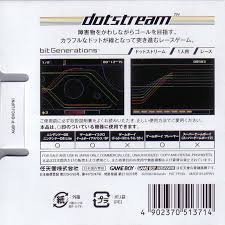
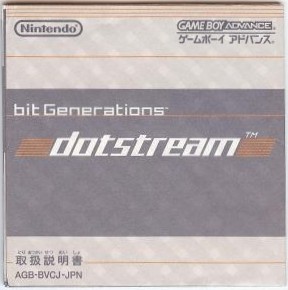
(Caravan)-0019 (another copy).png)
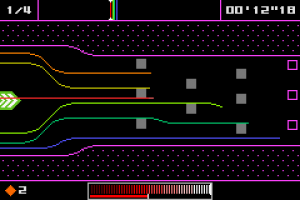
(Caravan)-0019 (copy).png)
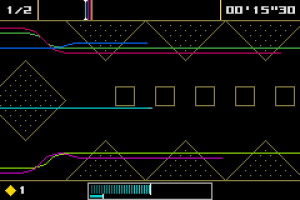
(Caravan)-0017 (another copy).png)
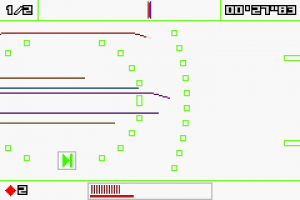
(Caravan)-0017 (copy).png)
(Caravan)-0009 (copy).png)
(Caravan)-0022 (copy).png)
(Caravan)-0022 (another copy).png)






















